Scoop reckons the Yamaha XS650SE Custom takes the biscuit as the most cost-effective way of buying one of these big twins: yummy!

Words: Steve Cooper
Pics: Gary D Chapman
You’re almost a decade into producing one of the world’s most successful big bore, parallel, four-stroke, twins and, against all the odds, it’s still selling…
OK, it’s actually still selling rather well. You know your bike is a fundamentally sound design yet you suspect it’s beginning to look a little long in the tooth so what do you do next? You’ve already had to drop the 750 twin you pinned your hopes on and you know, deep down, that the smaller 500 twin is never going to outsell the 250/350/400 two-strokes that have been your bread and butter for ages. Oh and your 750 triple isn’t so popular in the showrooms even if the bike journos love it. There has to be a plan and there is – in fact there are two. Plan A revolves around a new range of fours you’ve been working on for a while now. Plan B goes against all existing logic and wisdom – take your existing 650 twin and turn it into a faux chopper. The press will eventually ask: “What sort madness is this?” But you’ve done your homework. Roll of the drums some, sparkly lights, pull off the shiny cover and behold – the Yamaha XS650 SE aka the XS650 Custom.

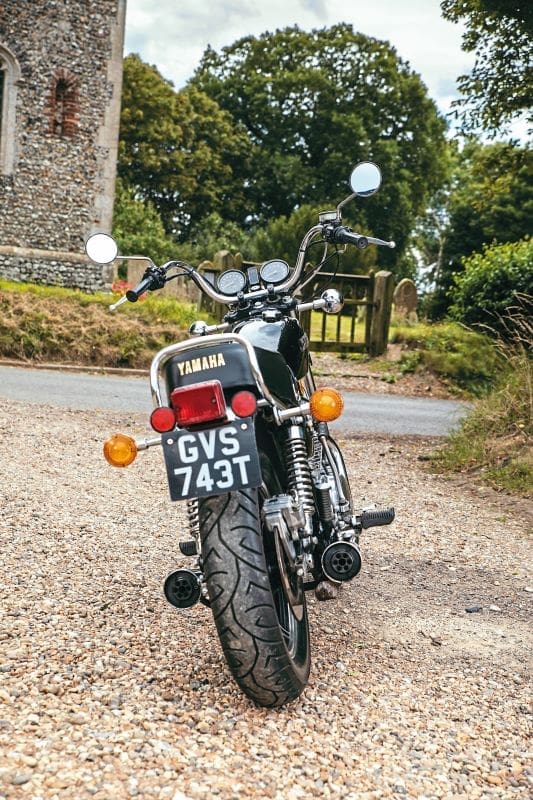
When every other motorcycle manufacture was making a pig’s ear of large capacity parallel twins, Yamaha’s SOHC XS was still cutting the mustard and the marketing guys knew there was a lot more life (and profit) left in the design.
A subtle rework of the frame, some new panels, a twin-level seat, short megaphone exhausts, a dash or two of extra chrome, a chunky back wheel, pull-back bars and Robert is your mother’s brother as they say. Almost overnight the XS650 Custom became a popular sub-genre of motorcycles in the key American market. It aped the style of numerous Harleys yet offered Japanese reliability, lower purchase price, and, crucially, much reduced mass compared to pretty much anything from Milwaukee.
Also, many who aspired to the chopper/cruiser look didn’t want the kitsch that came with the H-D badge or the insinuated bad-boy image so the relatively conservative Yam married up rather nicely with many aspirant owners’ expectations. Truth-be-told Yamaha was actually second past the post with factory customs as Kawasaki had had a half-hearted go at the look the year before with the KZ650C but the XS650 set the profile and tempo for everyone else to follow.

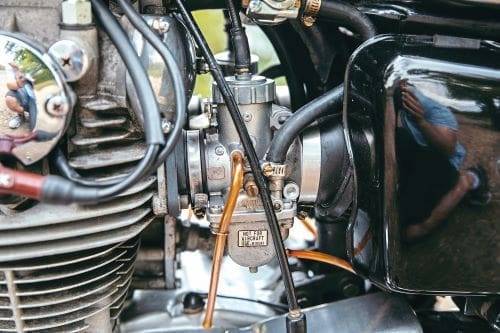
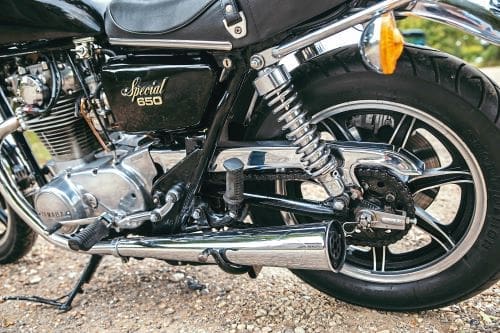
In camera for your delectation, we have a good, honest, example of a 1979 XS650SE that holds its age rather well. Finished, as many were, in subtle gloss black, chrome and alloy there’s a purposeful look to the bike and despite being a ‘factory custom’ it really doesn’t look like the proverbial tart’s handbag – understated would be an appropriate term. Many of these bikes were, sooner or later, further individually customised by their owners but this one only has a few tweaks. The front wheel runs a second disc, the silencers are aftermarket items yet close replicas of the OEM system, and the original CV carburettors have been swapped out for set of replacement round-slide Mikunis fitted with pod filters. Other than that our test bike is pretty much as it left the factory back in Japan.
The equipment levels are standard fare for the period and common to many Yamaha’s of the time. Signs of in-house modernising include the ‘push-to-cancel’ indicator button many of which were linked to a time/distance auto-cancelling system. The instrument panel is rubber mounted (big twin vibes remember?) and there’s a neat binnacle of idiot lights between the gauges; everything you need and nothing more. With the twin fuel taps set to ON we have two choices – either kick the motor into life or chance the button on the right bar. From the 1972 XS-2 on the big twin ran an electric foot buried beneath yet outside the gear-box and they come with something of a reputation. They either make unearthly sounds trying to turn the motor over or they work as Yamaha intended – blissfully today it’s the latter.
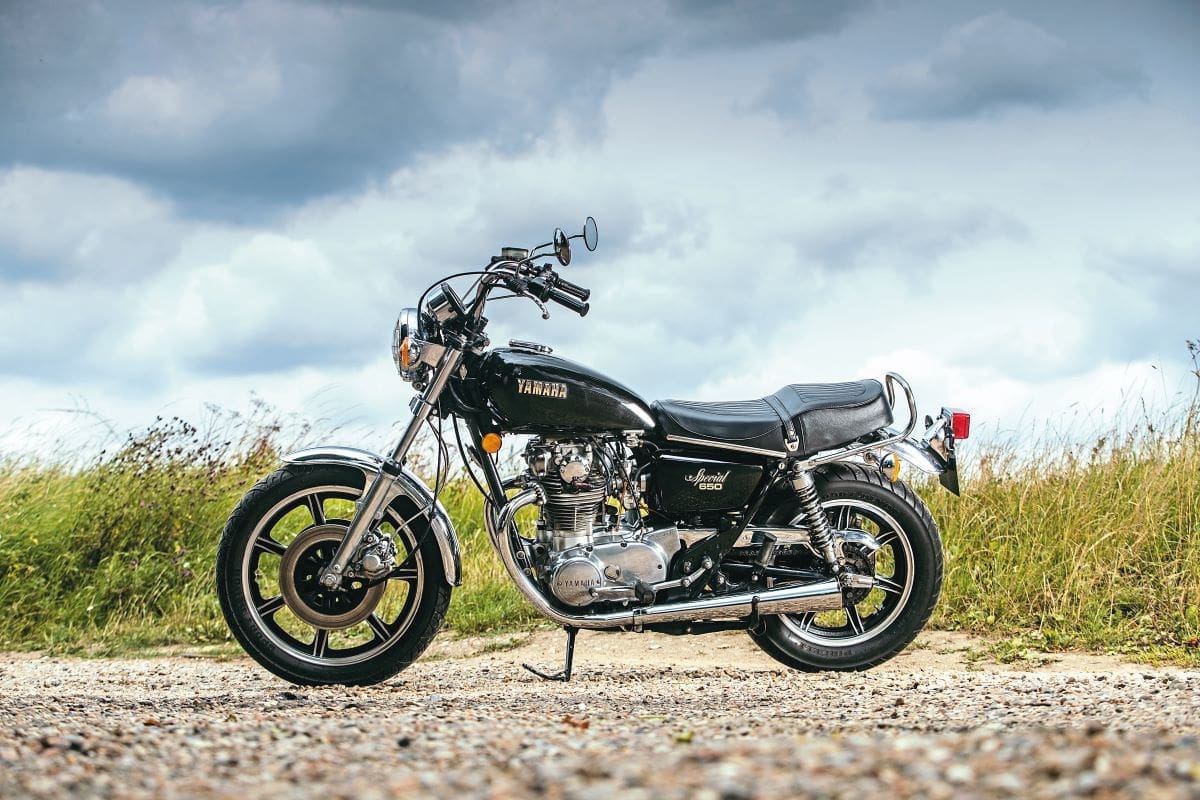
The motor rustles and rumbles away as only XS650 can with a rhythm as reassuring as a heartbeat. Those bars are the full-on cruising type that would make perfect sense on an American Interstate; around the back roads of East Anglian they’re more form than function but you get used to them.
Down into first, open the throttle and you’re away, that torquey motor is happy to short-shift and if you need to get a wiggle on there’s no need to tap the gear lever down. There’s loads of urge at the twist of the wrist and lots of flexibility from one of motorcycling’s best motors…ever. The more time you spend with any XS650 the more rewarding the experience. Faithful, reliant, dogged, friendly and loyal – it’s the two wheeled world’s version of a big old Labrador. Nothing fazes it, it’s genuinely hard to be in the wrong gear unless you’re a total klutz and as long as there’s fuel in the tank, oil in the motor and volts in the battery you can go on all day long.
It’s a factory custom so its road manners must be comprised right? Not a bit of it! Both forks and shocks are adjustable for preload and with a chassis re-engineered by the late, great Percy Tait (1975 and onwards), you have nothing to worry about in the handling department. That 130-90 16-inch rear tyre might look a little camp but it has virtually the same rolling diameter as the 18-inch ones used on the non-custom models so there’s no need to refrain from pushing the bike through the bends. Oh, and the firm, tiered saddle is reassuringly comfortable. Have a little faith in the R&D guys back at Iwata people – they really did know what they were doing you know.
With such a well-built power unit and decent frame there’s really not much to gripe about on an XS650 Custom. Those bars can be a bit of liability in tight turns and you can find your elbow touching your chest if you go into full lock at low speed. Like all factory customs the fuel tank is arguably too small but that’s also part of the look so that’s not really an honest criticism. The one and only beef with the bike is a clutch that can get slightly fussy in hot weather. Although the unit’s action never feels stiff, vague or maladjusted, gear selection can be just a little awkward but changing the oil in the unit construction engine/transmission to heavy duty 20w/50 oil designed for taxi engines normally sorts it out fine.
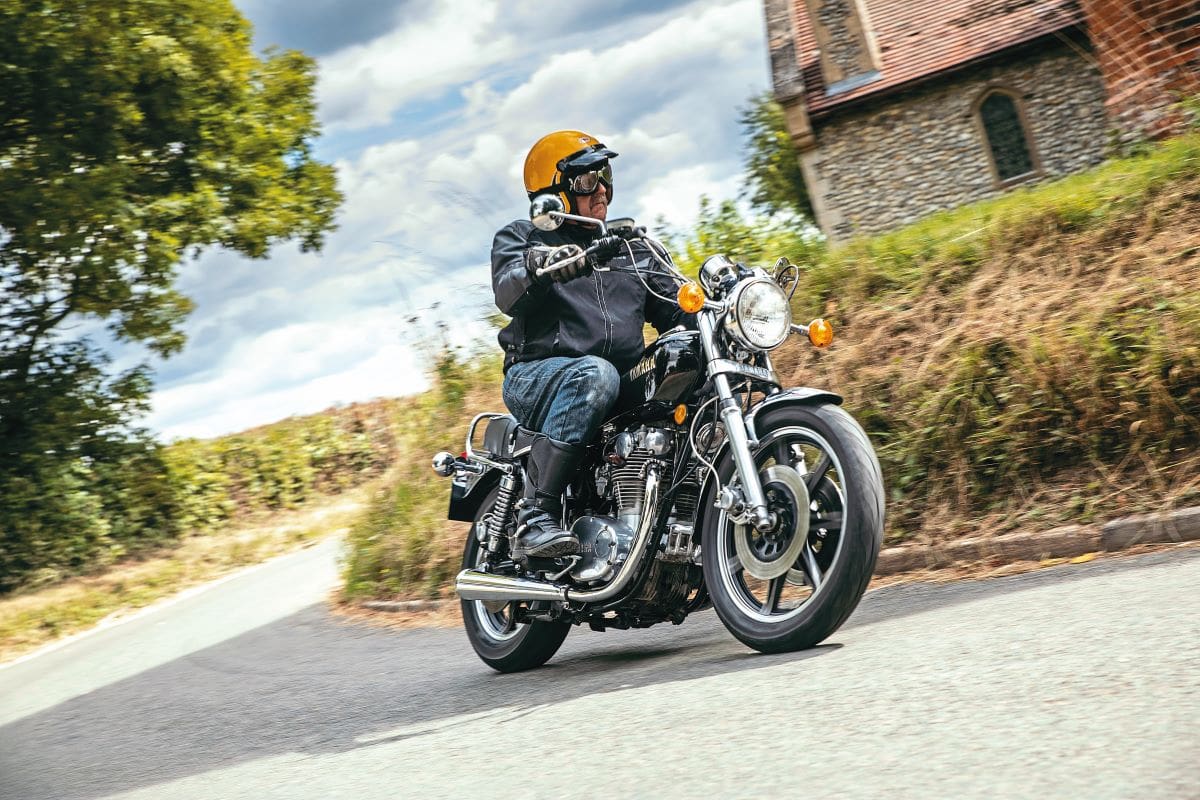
For a bike originally laid down in the mid-to-late 1960s the XS650SE still feels remarkably relevant today. Sure it’s a heavy old lump but then it was built to last so it’s unequivocally over engineered. If you were looking for just one twin cylinder modern classic running a big-bore four-stroke motor this has to be the bike of choice. The Custom models are generally a little cheaper than the so-called ‘Roadsters’, spares supply is literally amazing and in a world where sports mopeds make are beginning to head towards eight grand and beyond and XS650 makes an awful lot of sense both from the financial and enjoyment perspectives.
For just £3500 you could have one of the classic world’s best kept secrets, ride it as hard, as long and as far as you like and know your kids would be able to do the same when you finally hang up your leathers. Who said factory custom bikes were a waste of time and money eh?
The owner’s view by Micky Lee

“My brother, Steve, bought the XS in 1981 from the original owner when it was around 18 months old. This guy, who shall we say, was from a family known by many and not for bad reasons either, had crashed the XS through a pub door! My brother bought the bike with chopper extended forks, front wheel of origins unknown and a slash cut exhaust, replacing items damaged in the crash and swapped the bike for a 650cc AJS. Although the front-end was soon replaced the slash-cut exhaust was kept for some years and living in the sticks as we did then, my bruv’s arrival home was heard well before he was seen. The XS is stock except for pattern silencers (very close to original pattern) twin front discs (which make for an excellent stopper) and Mikuni VM carbs with oiled K&N filters. I prised the XS from my big brother’s grasp, at I must say, a very generous price. However, I’m under pain of death or worse if I turned the bike into a flat-tracker as I’d done to a SR500 I’d bought from him! I’ve owned the bike for around five years now and although I made half-hearted efforts to sell the bike when I went self-employed I’m pleased to say the funds weren’t needed – I’d have regretted the move massively and the bike’s a keeper.”
The XS650 Custom Story
The original so-called US Custom XS650 appeared in late 1978, was marketed as the SE, and came with metal side-panels and a simple tubular steel pillion grab handle.
From there through to the final SK models Yamaha played mix-and-match with a whole bucketful of variations. By 1980 the side-panels had become plastic and the grab handle had morphed into a substantial cast alloy item that now carried the rear light. Front brakes were always single disc affairs but the rear wheel could be either a rear disc or drum.
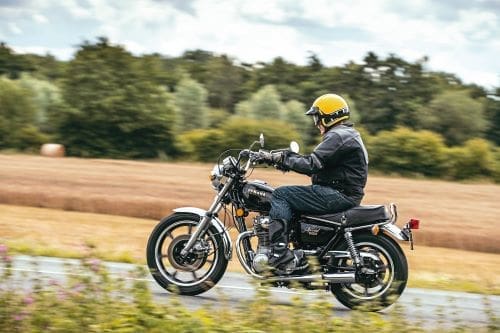
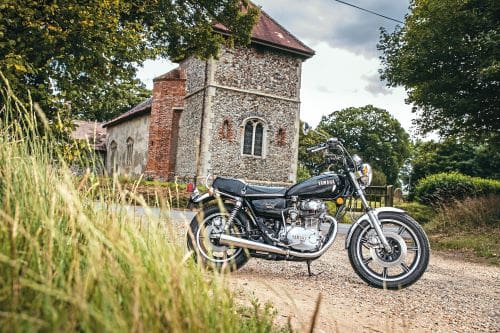
Wheels fluctuated between traditionally wire spoked or cast alloy with last ‘Heritage’ models featuring wire spokes arranged in patterns of fours. The ignition had traditionally been points and coil and that remained the norm on most UK models but a TCI (Transistor Controlled Ignition) became standard fitment from the US market SG’s onwards. Over the model’s life the seats changed from being hinged on the frame rail as per the Roadsters to being lift-off units secured with a key operated lock that also doubled as a helmet holder.
A range of handlebars seems to have been fitted dependent upon market and many USA models were fitted with a speedo that stopped at 80 mph with the portion from 55 upwards shaded in red like a rev counter. The biggest difference between European and USA models was the engine which, although being 650 in both cases, featured key components for the two different markets. American/Canadian motors have 130 mm long rods whereas the Euro models ran 136 mm rods – the pistons were commensurately different heights at the gudgeon pin so that both types fitted a single standard height barrel. The reason for this apparently strange fitment was that the USA motors were set up for fast quarter mile sprints whilst the European motors were targeted at sustained high speed use.
Against all the odds the Yamaha XS650 Custom was still being sold in 1985, a full quarter of a century after the first XS-1 rolled off the production line and demand apparently remained strong. The Custom models had proved to be easily as popular as the more traditional Roadsters in America. Digging a little deeper it would appear that Engineering and Marketing Departments back in Iwata weren’t fully cooperating with each other in the final years of the bike’s life. The last of the Custom models (SJ and SK) had received an update to the top-end necessitating a revised tightening sequence for the cylinder head nuts which suggests the motor was constantly being upgraded year on year. However, a buoyant sales forecast for the big twin seems to have been ignored in the light of developments elsewhere at Yamaha.
The all new XJ650 was about to be unveiled to the press and it was felt that having two 650s on the sales list wasn’t a good idea. In reality Yamaha’s Marketing Team was worried that the public would run shy of the new four-pot XJ scared that it might be yet another multi-cylinder turkey. However, if they axed the XS650 Custom loyal Yamaha buyers wouldn’t have an option and would buy the new bike. Yes, the logic does defy belief but that was the mind-set.

